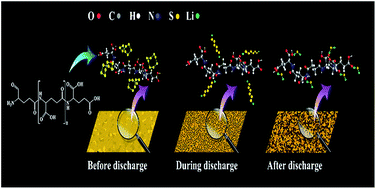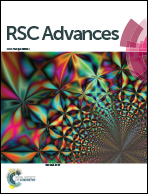Development of a γ-polyglutamic acid binder for cathodes with high mass fraction of sulfur†
Abstract
Lithium–sulfur (Li–S) batteries have been one of the most attractive secondary battery systems to take advantage of their high theoretical energy densities and the low cost of sulfur. However, to realize their wide-scale commercial use, a high sulfur fraction is essential for the sulfur cathode. It is well known that the binder has a direct impact on the properties of the sulfur cathode. In this paper, γ-polyglutamic acid (PGA) was adopted as a functional binder in Li–S batteries. With plentiful electron-rich groups (amide, carboxyl) in the PGA molecular chain, the shuttle effect was restrained, and a good conductive network was formed. It was found that batteries using PGA as a binder exhibited better electrochemical cycling performance and rate capability compared to batteries using LA132, a common binder in sulfur cathodes. Even the PGA cathode contained a high sulfur mass fraction (77 wt%), the discharge capacity still remained 659 mA h g−1 with a coulombic efficiency of around 99% after 200 cycles at 0.5C.



 Please wait while we load your content...
Please wait while we load your content...